A lot of people have the idea that in an emergency, they can break out a can of emergency seeds, toss them on the ground, and quickly produce enough food to feed their entire family. Unfortunately, it doesn’t actually work that way.
While gardening is great for self-sufficiency and preparedness, I’d like to share some of the realities of survival gardening that I’ve learned in my own home garden. Here’s the SparkNotes version:
- Seeds expire.
- Crops can fail for lots of different reasons.
- A lot of room goes a long way.
- Gardening for survival takes more work.
- Timing is everything.
- Prepare to preserve.
- A 360-degree food plan is essential.
When the COVID-19 pandemic began to hit the United States around early March, I kicked into gear gathering seeds, buying tools, starting seedlings, reading gardening books, and putting together a raised bed. Later in the season, my neighbor tilled a large plot of ground to make the largest garden I’ve ever grown. It turned out to be a prep test — how well could I feed my family during a SHTF pandemic?
Now that it’s August, I can safely declare my summer garden a success. I grew salad greens, corn, squash, tomatoes, peppers, and beans — enough for our regular meals and plenty to store for the winter. My current garden is the best one I’ve ever had. That said, there’s also a lot that went wrong. I got a pretty good yield this year, but I also learned that I can’t feed my whole family on my garden alone. I still have many long hours of study and work ahead of me before I’m a skilled enough farmer to come even close to getting my yield to the point where a garden can provide real, long-term food security for my family.
Seeds expire
The problem with products like sealed “seed vaults” sold by preparedness companies is that seeds actually have a shelf life. In fact, for many seeds, they may only last a year or two, even in optimal storage conditions.
A few years ago, I received a My Patriot Supply seed bank as a Christmas present. This year, I planted several of the cucumber seeds (my son loves cucumbers). Only a couple of them sprouted and survived to produce cucumbers. Whomp, whomp. That was a failed test of a common prepping item.
Imagine if I’d waited to fully rely on those seeds to feed my family. We’d have gone hungry.
The thing with seeds is that they’re fickle. While the experts say seeds stored in cool, dark, airtight spaces can last up to 10 years, I’ll tell you from personal experience that that’s an optimistic timeline.
It’s vexing when seeds fail to become plants, but I knew there could be any number of reasons why my cucumbers didn’t grow:
- Bad seeds
- Poor soil conditions for that particular plant
- Not enough moisture
- Too much moisture
- Insects eating the seed
And so on and so on. I didn’t fully understand the problem until I decided to grow a second round of cucumbers in a square-foot bed. This time, I was a bit smarter. The bed is divided into six squares. I planted the My Patriot Supply seeds in four squares. In the last two squares, I planted cucumbers from a random seed packet I had laying around.
A few days later, the last two squares were full of cucumber seedlings, while I had nothing in the first four. It came down to bad seeds! Now, I don’t necessarily blame My Patriot Supply for this. The fact is, I had those seeds for a few years and they probably just expired. I translated some of the plants over to dead spots and replanted good seed, and how have a bed full of cucumber plants.
Even with careful storage, I’ve learned you should really treat seeds just like you would a perishable stored food: first in, first out. Next year I’ll start using my oldest seeds first, and make sure to buy fresh stock every year.
Crops can fail in all sorts of ways
This summer, I’ve experienced pretty much every possible problem you could have with a garden…
…fungus infecting my bean plants…
…raccoons destroying my corn…
…weird, misshapen ears of sweet corn from insufficient fertility…
…worms and bugs eating my plants…
…in addition to the above, I’ve also had to deal with:
- My onions just not thriving
- Strong winds knocking down corn plants
- Weeds, weeds, and more weeds
Despite all of my aforementioned corn woes, I’ve still had a pretty good corn harvest this year! That’s because I planted a lot of seed corn. Not all of it germinated. Not all that germinated grew into successful plants. Not all the successful plants produced full ears. Not all of the full ears survived the raccoons. I planted around maybe 50 kernels and I’ll wind up with maybe 20 good ears of corn. Maybe that’s a terrible ratio, but the important thing is: I got a yield.
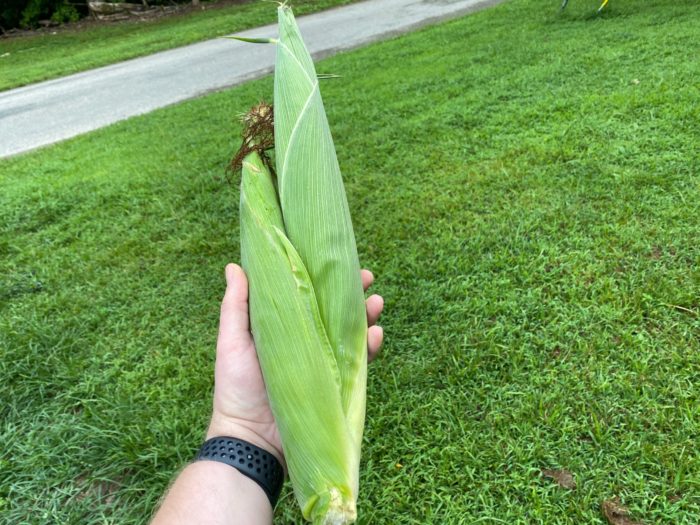
All of this is to say: I’ve learned not to count my corn husks before they’ve hatched. Anticipate crop losses. How? Well, that’s simple, though not easy: overwhelming numbers.
Plant much, much more than you want, and thin down later as needed. If you have the seed and space, plant twice as much as you think you want. Go big or go home hungry.
Gardening takes a lot of room
My first few gardens were small, tepid things, just to test the waters. But this year, I went with exactly the opposite approach. I decided to use all the space I had for planting. That approach paid off.
You often see stories about micro farmers who grow everything their family eats in a small backyard. Yes, it’s doable, but it ain’t easy. If you cram plants in close together, they need a ton of fertilizer and water. You also have to think carefully both about pest and disease management, because when your plants are closely bunched together, they’re also more vulnerable.
More space equals more options:
- You can space plants out farther so they don’t require as much water and fertilizer.
- You can plant redundantly so you can lose a few plants without losing the whole harvest.
- You can plant a greater variety of things, which makes you more pest resistant and again gives you more room to fail.
The reality is that you’re not going to go from zero gardening experience to being a micro farmer feeding your family from a kiddie pool overnight. You can read every gardening book in the world and watch every YouTube video, and those can help, but to garden successfully you also have to learn about your local environment, often through trial and error. The more space you can dedicate to a garden, the more mistakes you can afford to make.
Gardening is work
“Duh,” you say. Well, yeah, but until you actually try to grow food for real, you may not realize just how much work it really is. It takes a lot of work to turn a plot of grass into arable land, even with tractors and tillers. Mixing in fertilizer, sowing, weeding, fertilizing, handling pests, and harvesting can all be essential and time-consuming.
Now, in a true SHTF scenario, this may be fine. What else are you going to have to do when the power is out and the bank has bigger problems than foreclosing on your house? But what about scenarios like what we’re experiencing now? For instance, I’m writing this article instead of walking the field with my triangle hoe and chopping the thousands of weeds that have sprouted in my poor garden.
It’s not all just physical labor, either. It’s the mental labor of studying gardening methods and constantly considering what I need to be doing in my garden at any given moment. Because gardening is all about timing.
Timing is everything
A garden is a harsh mistress. You have only limited windows to do any given thing:
- If you plant too early: cold weather can kill or stunt your crops
- If you plant too late: you may not get a harvest in time. Or bugs might be too rampant.
- If you fail to weed early and often, they can overtake your garden.
- If you don’t catch an insect infestation in time, your crops may be unsavable.
- If you don’t start preparing your plot early enough, you may not be able to plant on time.
- If you harvest too early or too late: your crops may be inedible.
This requires constant attentiveness and observation. You can’t just take off to the Bahamas for two weeks. Gardening for real has dominated my life for much of the past year. No problem since I can’t travel due to COVID, anyway. But if I want to keep up this practice, I’ll need to stick with it even in years when everyone else is traveling and relaxing.
Be prepared to preserve
Another thing to consider on the timing front is how long the food lasts after you pick it. You are at the mercy of nature, and a common thing that happens is for a lot of a single crop to come in all at once. Imagine getting bushels of squash and little else for a couple of weeks. You can only eat so much squash. Trust us, we know this from experience.
Garden spoilage is a common thing, either in the field or in the fridge. It’s a real bummer to watch food you’ve spent months growing go bad. But there’s a lesson to be learned from those painful mistakes: food preservation is as much a part of your gardening skills as growing.
There have been entire years in which I didn’t bother with a garden because I knew I’d have no help preserving it. Thankfully, this year my wife had the time and the means to can much of our produce. After much deliberation, we bought the new Presto Precise electric pressure canner, and she’s been canning cucumbers, tomatoes, and squash all summer.
She’s worked hard at it. She spent months taking online courses and studying the latest canning science to safely preserve our food without making us sick. She spends hours in the kitchen several days a week carefully following every step of the process. Even with our fancy digital canner, it’s an enormous amount of work.
But the reality is, without that intense labor, a lot of our gardening efforts would be wasted. All that food would go bad in the fridge.
A 360-degree food plan
Let’s take a look at the garden I’ve been growing this year. I don’t have an exact measurement, but it’s a pretty large garden, I’d estimate to be about the size of a junior football field. In this garden, I planted lettuce, potatoes, corn, onions, bush beans, peppers, tomatoes, sweet potatoes, and both summer and winter squash.
Out of all this, the beans have done the best. We’ve had a least a month’s worth of meals from them, plus several cans for winter, and even some to give away or trade. Despite all our corn problems, I estimate we’ll end up with 20-30 ears total. We had enough lettuce for a handful of salads. Not many onions, but a decent amount of tomatoes and peppers.
I’m not sure about the potatoes and sweet potatoes yet, but I estimate that we have about 40 winter squash, assuming they all come to full maturity.
This is easily the best garden I’ve ever grown. It’s supplemented many meals this summer, but it’s just not enough to feed my family of four for a year, much less our chickens.
One day, I hope to be a good enough farmer to produce a lot more food in the same space, but as my late grandmother, who grew up in the Great Depression, would say, “Want in one hand, piss in the other, see which gets full faster.”
A perhaps more eloquent way to phrase that would be: Desire does not make a full belly. Or: Don’t put all your eggs in one basket. To put it even more simply: gardening is a great step toward self-reliance and preparedness, but it’s only one piece of my food preparedness plan.
Our garden is not our only source of fresh, local produce. We signed up with a local CSA to supplement our harvests. We’ve also been buying and trading from friends and relatives with gardens and farms of their own. That’s gained us blueberries, jalapenos, cucumbers, garlic, milk, cheese, yogurt, meat, and other things that we either can’t or didn’t want to produce ourselves.
Additionally, we’ve been adding to our stockpile of dry goods. We’ve crammed every closet in the house with food: rice, dry beans, canned beans, dry milk, crackers, peanut butter, etc. If you don’t know where to start on your own stockpile, consider the LDS plan we covered recently. Our freezers are crammed full of meat from a nearby farm.
This gives us variety and options. If the power fails and the meat expires, we’re not doomed. If the crops had failed, we also wouldn’t have been doomed. We’re also not stuck eating nothing but butternut squash all winter. As much as I like the squash I’ve grown, it gets old fast!
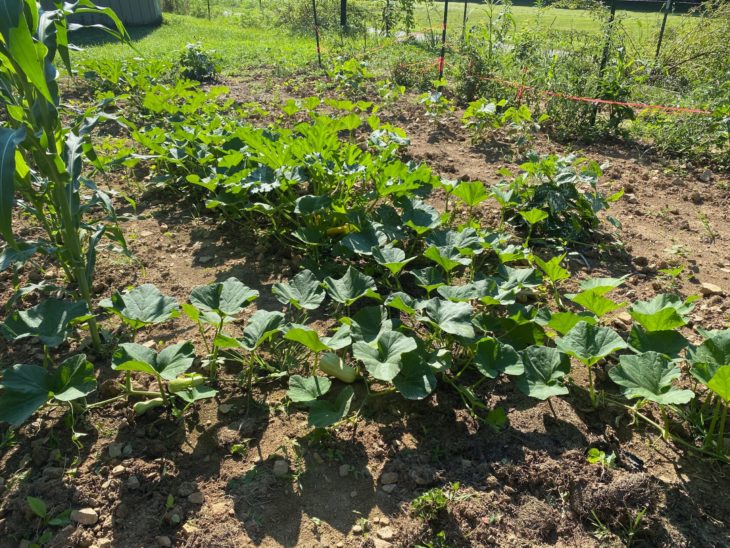
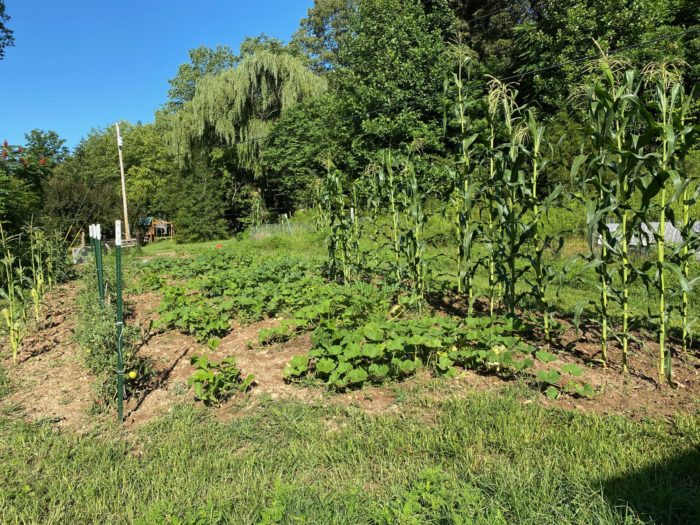
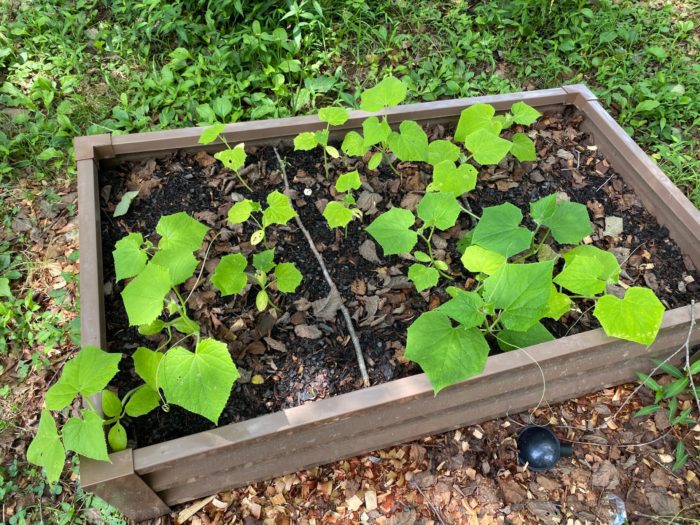
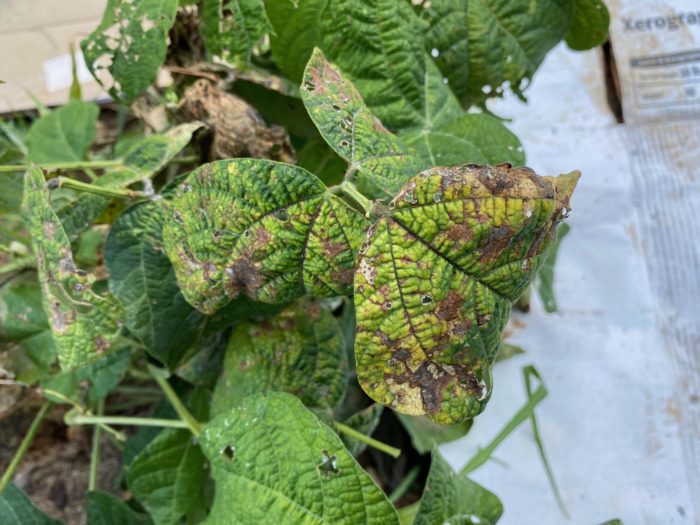
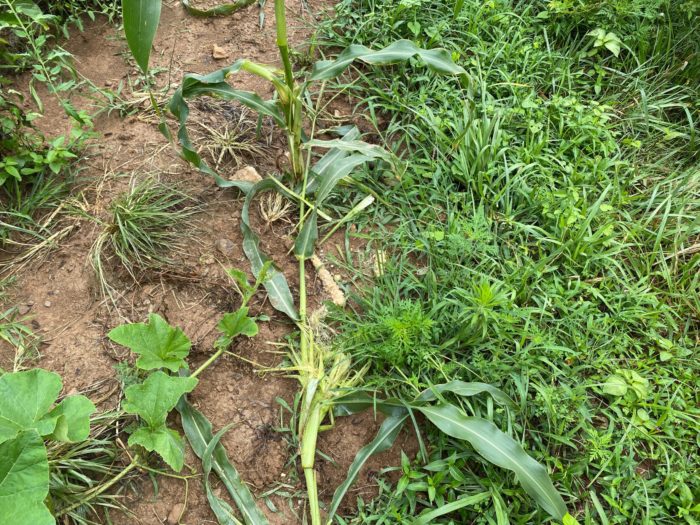
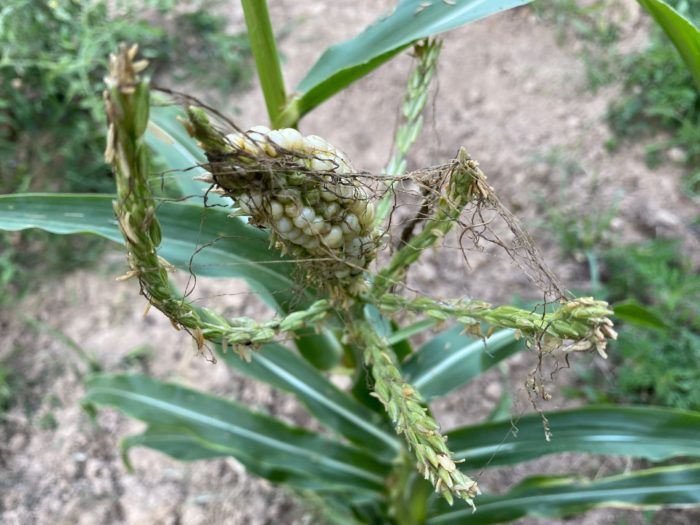
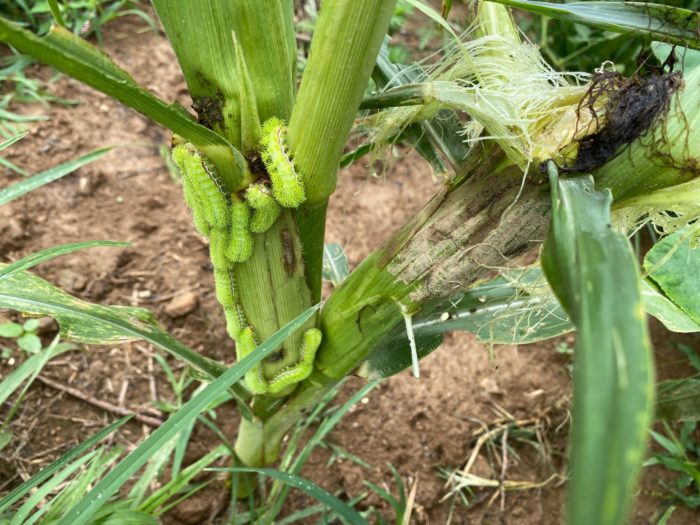
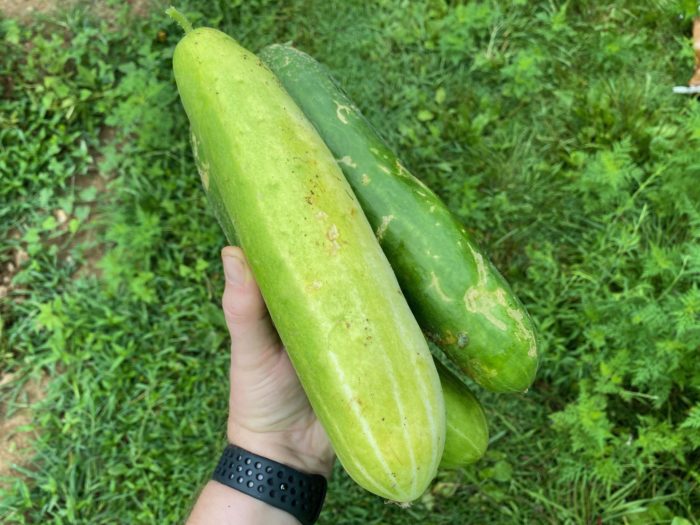
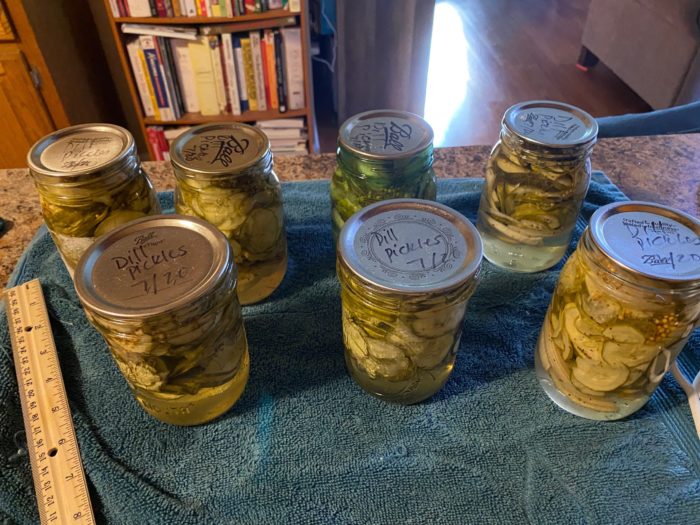
You are reporting the comment """ by on